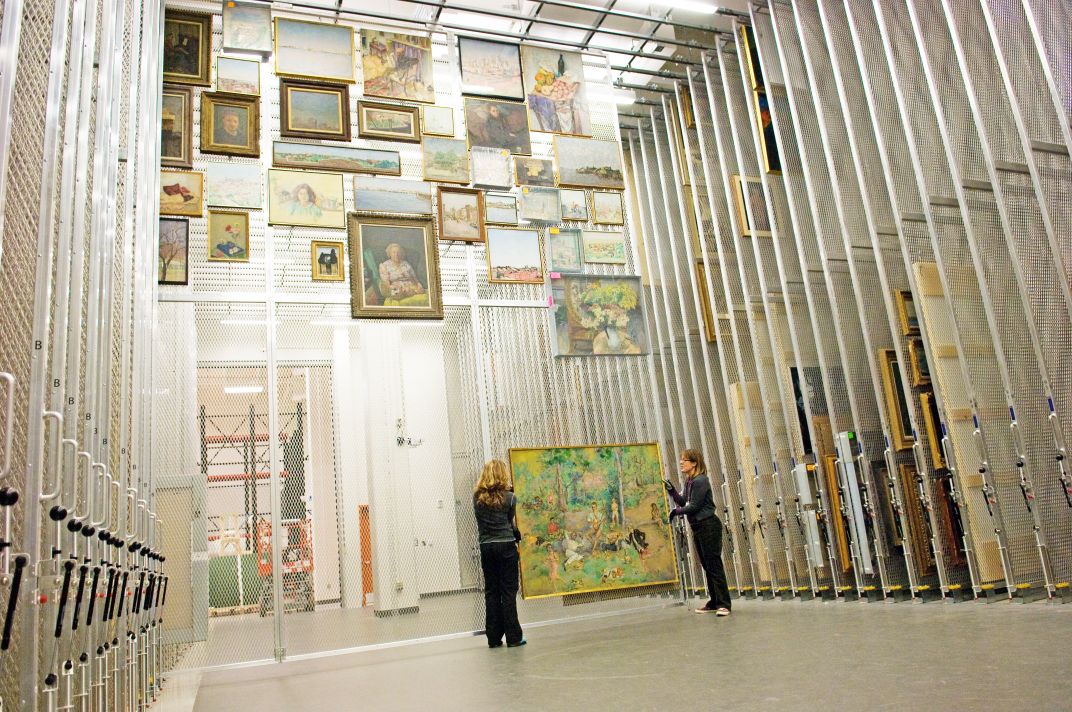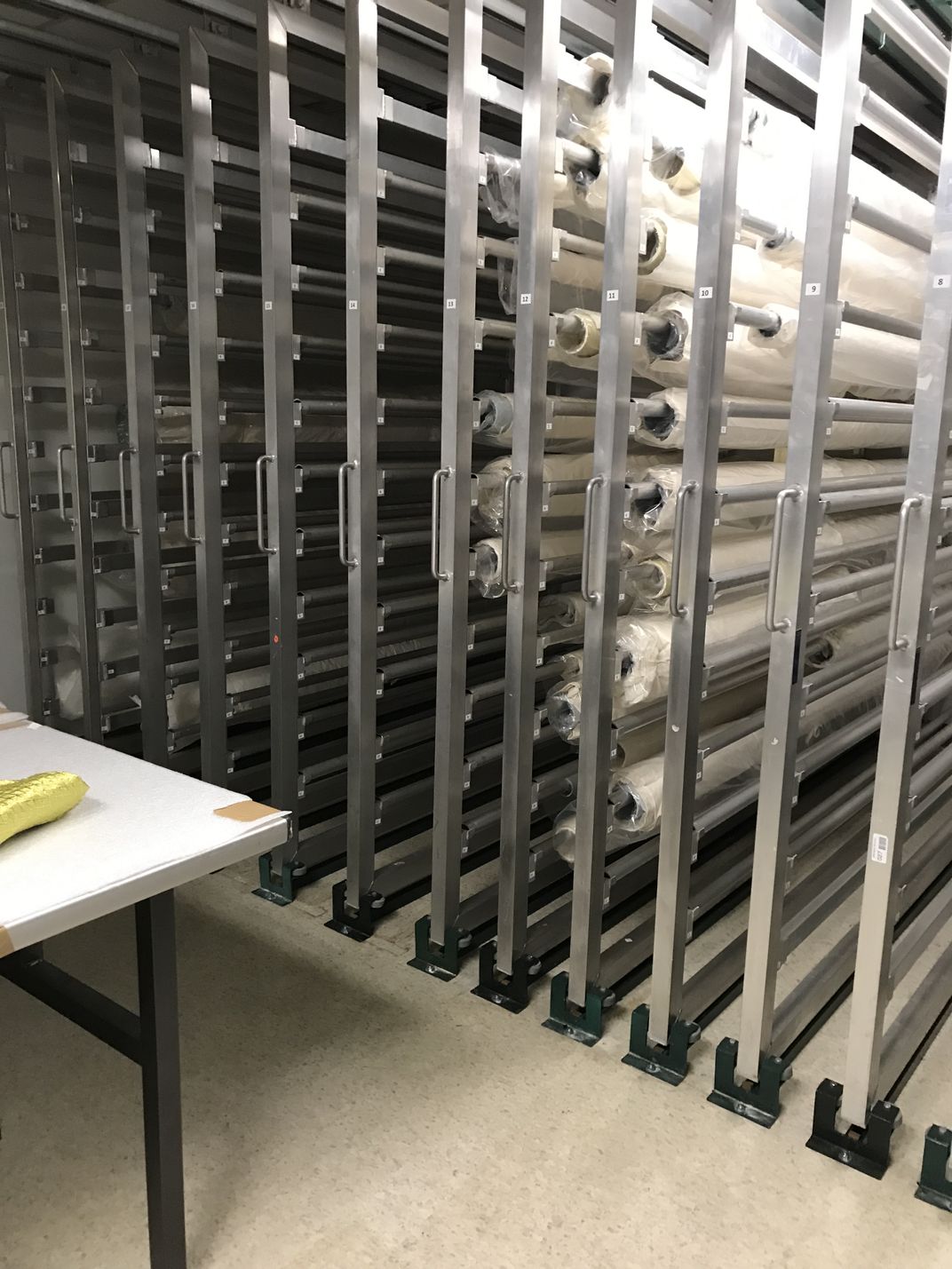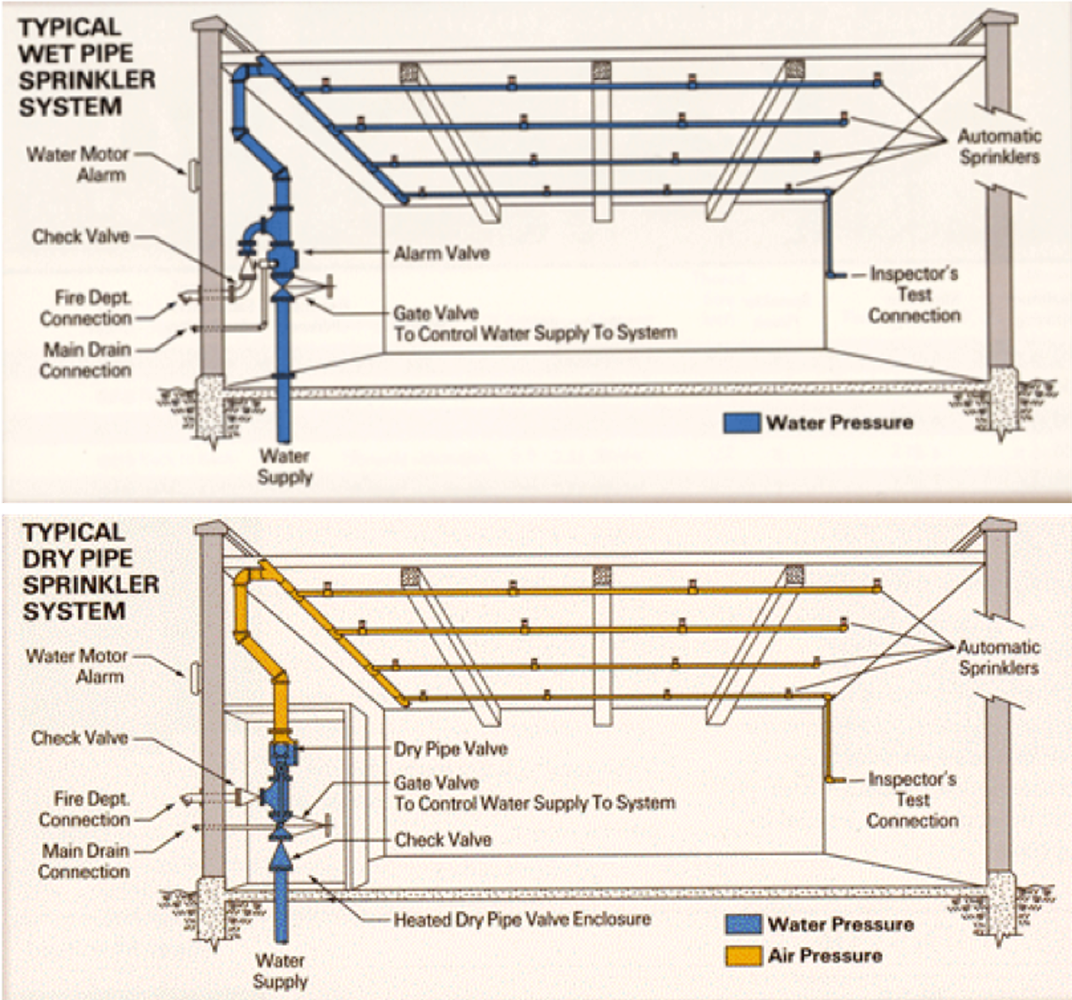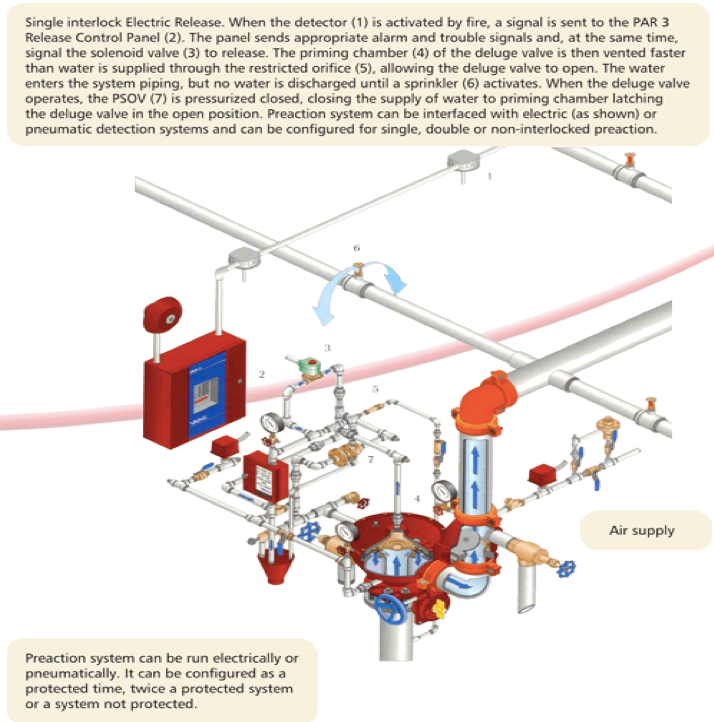OFFICE OF ACADEMIC APPOINTMENTS AND INTERNSHIPS
Can Virtual Internships Help Protect Vulnerable Collections at the Smithsonian?
Every collections steward’s worst nightmare is receiving notification that a collections storage space has been damaged by a water or fire incident. Museum collections professionals are concerned with everyday threats like small or persistent water leaks, and larger, catastrophic events such as natural disasters, mechanical or operating system failures, or fires. Effective ways to prevent and prepare for a collections emergency is to perform risk assessments and to create an emergency response and recovery plan. Such a plan provides staff with an understanding of an action before it has occurred and informs them on how to react if an emergency emerges.
Every collections steward’s worst nightmare is receiving notification that a collections storage space has been damaged by a water or fire incident. Museum collections professionals are concerned with everyday threats like small or persistent water leaks, and larger, catastrophic events such as natural disasters, mechanical or operating system failures, or fires. Effective ways to prevent and prepare for a collections emergency is to perform risk assessments and to create an emergency response and recovery plan. Such a plan provides staff with an understanding of an action before it has occurred and informs them on how to react if an emergency emerges.
As collections professionals regularly work on upgrading their plans, they also continuously monitor the security of their collections storage spaces. To protect collections items from water or fire damage, items are stored in various housing containers depending on their size, medium, and condition. Contingent upon these variables, most objects are stored in boxes, cabinetry, drawers, crates, covered pallets, or on racks. While some of these objects such as 3-dimensional artifacts are stored with multiple layers of protection, other objects such as framed art in storage are more exposed. Some of the most efficient ways to store artwork or art-like objects are on rolled textile racks, hanging art screens, or open shelving. However, these paintings can be densely stored in proximity to the other objects and are made of materials that are both combustible and vulnerable to damage.

Occasionally collections managers protect their collections items by covering them with polyethylene sheeting. Despite the clear plastic working as a barrier from dust and water leaks, but from a fire prevention standpoint, it is flammable and should be replaced with nonflammable or fire-retardant covering. Second, if exposed to fire or extreme heat from a fire, plastic sheeting can melt, release toxins, and can adhere to collections that can be difficult to remove. Third, in an event of a fire, the sheeting may delay any sprinkler discharge from reaching the fire source. Facility and collections managers recommend mitigating any of these risks at the source. This means identifying and addressing the cause of any leaks and ensuring the appropriate type of sprinkler system is installed. While subject matter experts understand that the proposed solutions take time and resources, as an interim measure, experts recommend alternatively covering individual exposed objects with another material. For example, Nomex material serves as an excellent barrier from fire and heat as it is made from flame-resistant synthetic fabric.

What are sprinkler systems and why are they important to have in a collections space? A fire sprinkler is used to extinguish, or control fires activated by heat, smoke, and or a combination of the two. If a fire occurs overnight in a large storage room containing over 5,000 objects and there are no trained personnel physically monitoring the area, what happens? The fire could grow undetected, damaging or destroying an entire collection. Therefore, in the event of an emergency, collections stewards rely on sprinkler protection to help regulate and protect a safe and secure collections space. Automatic sprinkler systems are the most common types of fire sprinkler systems that are used to protect museums and their collections. Primarily, there are two types of systems used in collections storages, wet pipe and pre-action, but in some cases, you may also find dry pipe systems.
1. Wet pipe fire sprinkler system
Some benefits of a wet pipe sprinkler system are high reliability, low maintenance, heat activation, and automatic responses. If the space is protected with a wet pipe system, then the sprinkler closest to the fire will open. A sprinkler will open when heated to an elevated temperature (typically 165F). At the same time, the system senses the flow of water and alerts security, staff, or the fire department. However, wet pipes are the leading cause in water leaks and subsequent water damage.
2. Pre-action fire sprinkler system
Studies show the benefits of pre-action systems are that they provide an extra level of protection from accidental water damage. For pre-action, the valve is held closed electro-mechanically and is released by a signal from the fire alarm system upon smoke detector activation. Office of Safety, Health, and Environmental Management's lead fire protection engineer believes that converting existing wet pipe systems to pre-action would be more beneficial in reducing the risk of water damage to collections, while ensuring adequate fire protection.
3. Dry pipe fire sprinkler system
In a dry system, the valve holding the water back is kept closed by the air pressure in the piping. The disadvantage to this system is its increased complexity in functionality. Dry pipes require additional control equipment and air pressure supply components. Without proper maintenance, it can become less reliable and costlier. For these reasons, professionals favor wet pipes and pre-action systems instead of dry pipes.


Though unintentional sprinkler releases are rare, they still pose a high risk. For a Smithsonian storage space, this was the case. On one occasion, a unit experienced an unintentional sprinkler release, causing damaging to their space and collections. This incident became the impetus for this project involving the Office of Safety, Health, and Environmental Management (OSHEM) fire protection division and the National Collections Program (NCP). OSHEM’s fire protection division helps administer new water and fire safety programs, as well as audits museum units, research centers, and storage spaces. While NCP’s office serves to dedicate improving collections stewardship by providing central leadership, policy oversight, strategic planning, funds, and support of Smithsonian-wide collections initiatives. Since the incident, both offices have begun working together to help determine which is the best course of action to prevent any further sprinkler system incidents from occurring and damaging collections spaces.
My role in this project as a National Collections Program Graduate Virtual Intern was to assist OSHEM and NCP. I was to conduct an internal survey across all Smithsonian collecting units, design unit spreadsheets based on location information using the Collections Space Systems database (CSS), coordinate with each collections emergency unit point of contacts (CEPOC) and analyze the collected data. In particular, the survey would focus on areas that have densely stored framed art or rolled textiles that have no containers to provide protections from fire or water damage. The goal of this project was to develop a plan for improving the protection of highly vulnerable collections. Subsequently, the data collected would serve as a “first-pass” at assessing what order fire protection system upgrades across the Smithsonian should take place to further mitigate the risk of damage to highly vulnerable collections.
The Collections Space System is used for documenting and monitoring the quality of current collections space conditions pan-Institutionally. First, by using this database, we effectively gathered and identified 23 units containing over 2,000 spaces that included Smithsonian-owned and leased spaces and used as temporary spaces. Next, we determined which spaces have open art rack or hanging storage and then recorded the approximate square footage of the space. Now it was time to assess the data and evaluate their risk levels. With the help of the Smithsonian Directive (SD) 600 Implementation Manuel and section covering Collections Space Security Standards, I learned collections are classified by highest/lowest level of physical security needs based on risk and value. This type of information is very important because if collections are identified as high-risk, they must have higher levels of protective measures. Once all unit responses were received and compiled, we analyzed the information and located the most vulnerable collections items. This process helped determine a priority list of units that needed an upgrade. By separating the leased spaces from the owned spaces, we also determined it would be easier to make a case in investing in a facility that is going to stay long-term than short-term.
In the end, we identified less than 50 spaces with open rack and hanging art storage. Based on the size of the collections spaces, large spaces greater than 1,000 square feet will be prioritized first. Succeeding steps consist of working with the Smithsonian’s Office of Facilities Management and Reliability (OFMR) to confirm the current type of sprinkler systems in each of the considered spaces. OSHEM’s and NCP’s next steps include speaking with unit collections managers who have collections items stored on open racks and protected with wet pipe sprinkler systems to discuss possible conversions to pre-action sprinkler systems. Future follow ups include reviewing other protective measures for collections more common in history/culture or library/archive collections.
Having the opportunity to communicate with collections stewards across the Smithsonian allowed me to learn in detail about the variety of collections, such as learning where they were located, which collections were made of vulnerable materials, and which objects were at risk. This kind of information helped me visualize and connect with the collections, despite being miles away from the Smithsonian. And with the help of technology, I was able to graph out data, examine numbers, and use visuals to assist me in my investigation. I am so fortunate I was able to participate in this project because although it was conducted entirely online, I was still able to make an impact as an emerging steward at the Smithsonian Institution.

